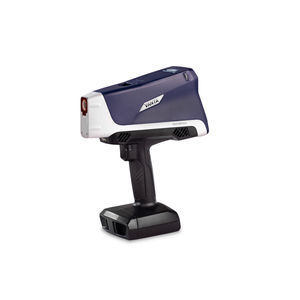
- Metrology - Laboratory
- Analytical Instrumentation
- Metal analyzer
- Evident - Olympus Scientific Solutions
- Company
- Products
- Catalogs
- News & Trends
- Exhibitions
Metal analyzer X-STREAMleadzincelemental



Add to favorites
Compare this product
Characteristics
- Measured entity
- metal, lead, zinc
- Measured value
- elemental, identification
- Mode of use
- automatic
- Technology
- XRF
Description
For some time, glass ceramics have been causing problems throughout the glass recycling industry. The melting behavior of glass ceramics is different from that of 'normal' glass; therefore, they will not dissolve in the melting tank at the glassworks, or dissolve only with great difficulty. This poses an array of problems; from serious damage and fire-hazard during the production process to defects or inclusions in the final product. The expanded use of glass ceramics and its tendency to turn up in recycling glass is on the rise; and it is problematic for glass collectors and processors to recognize glass ceramics visually when conducting inspection for incoming materials. In conjunction with the rising glass ceramics problem, glass recyclers are also facing the challenge of keeping the lead content of their glass cullet below a certain level, due to the increased stringency of legeslated regulations.
BT-Wolfgang Binder utilizes X-STREAM sensor technology in their REDWAVE XRF G glass sorting systems which offers glass cullet processors the ability to sort glass by elemental composition. The XRF sensor searches for certain elements such as Titanium, Zinc, Zirconium (which are typical markers for glass ceramics) and Lead. The system then efficiently extracts the contaminations by using air jet diversion. The REDWAVE XRF G systems by BT-Wolfgang Binder are capable of processing up to 28 tons/hour of glass cullet, extracting glass ceramics and leaded glass simultaneously.
The REDWAVE XRF-M analyzes and evaluates materials according to chemical composition to reliably detect and sort unwanted parts.
VIDEO
Catalogs
No catalogs are available for this product.
See all of Evident - Olympus Scientific Solutions‘s catalogsOther Evident - Olympus Scientific Solutions products
XRF Analyzers
Related Searches
- Concentration analyser
- Desktop analyzer
- Automated analyzer
- Evident Olympus solids analyzer
- Portable analyser
- Continuous analyser
- Real-time analyser
- Laboratory analyser
- In-line analyser
- Calibration analyser
- Waterproof analyzer
- Quality control analyser
- Rugged analyser
- Cost-effective analyzer
- Evident Olympus elemental analyzer
- Evident Olympus stainless steel probe
- Heavy-duty analyzer
- Manual analyzer
- Environmental assessment analyzer
- Evident Olympus current probe
*Prices are pre-tax. They exclude delivery charges and customs duties and do not include additional charges for installation or activation options. Prices are indicative only and may vary by country, with changes to the cost of raw materials and exchange rates.







